 Corbin Ball, CMP, CSP is a professional speaker and consultant focusing on meetings technology. With 20 years of experience running international citywide technology meetings, he now helps clients worldwide use technology to save time and improve productivity He can be contacted at his extensive web site: www.corbinball.com and followed on Twitter: www.twitter.com/corbinball
Corbin Ball, CMP, CSP is a professional speaker and consultant focusing on meetings technology. With 20 years of experience running international citywide technology meetings, he now helps clients worldwide use technology to save time and improve productivity He can be contacted at his extensive web site: www.corbinball.com and followed on Twitter: www.twitter.com/corbinball
As a professional speaker, I have had the opportunity to give hundreds of live presentations and dozens of virtual ones. Face-to-face meetings are as different from virtual meetings as day is from night with each having strengths and weaknesses. This article lists my observations on these very different ways of communication.
Face-to-Face (F2F) Meetings
Focus:
F2F can accomplish many goals including: information exchange (leaning),  collaboration, networking, commerce, interaction and more.
collaboration, networking, commerce, interaction and more.
Strengths:
F2F has many strong points – as the saying goes “There is no such thing as a virtual beer.”
- Richer experience: There is no better way of getting to know a person that by meeting them in person. There are so many nuances we tune into instinctively when we meeting someone, or see them on the platform, that simply cannot be transmitted on the Web. These subtleties in communication in a speaking/training situation assist in learning. As a speaker, to be able to see the whites of people’s eyes, to hear their questions, to observe how attentive they are is invaluable in adjusting my presentation to keep them with me and enhance the learning process.
- Networking, brainstorming, interactivity: F2F has other strengths as well. There is the opportunity to network, brainstorm, to break people into small groups, and much more that will enhance learning and increase the fun. Often times much of the learning at a meeting happens in the hallways outside the room or during the social functions. Virtual meetings simply can’t compete in this realm.
- More conducive learning environment: As people are away from the distractions of their office (except for the cell phone call), they can focus better on the learning environment
Length:
Presentations can last for 10 minutes or workshops for two days or longer. As long as you keep people engaged, and keep them fed and happy, people will stick to the tasks at hand.
Weaknesses:
Time and travel costs/hassle are two of the biggest weaknesses of live meetings.
Virtual Meetings
Virtual meetings come in many shapes: video conferencing, web casting, web 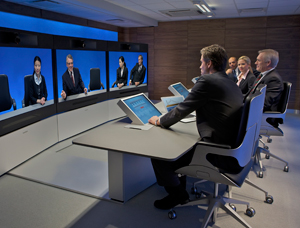 conference/collaboration, and even audio conference calls can be considered a virtual meeting. This article will focus the web conference/collaboration products such a Live Meeting – a.k.a. PlaceWare (www.livemeeting.com) and WebEx (www.webex.com). These products usually use the web to push PowerPoint slides and other applications to the viewer’s desktop. The typically include voice over the internet or a telephone conference bridge for audio and a variety of interactivity tools for surveys, audience polls, slide annotation, and questions via chat.
conference/collaboration, and even audio conference calls can be considered a virtual meeting. This article will focus the web conference/collaboration products such a Live Meeting – a.k.a. PlaceWare (www.livemeeting.com) and WebEx (www.webex.com). These products usually use the web to push PowerPoint slides and other applications to the viewer’s desktop. The typically include voice over the internet or a telephone conference bridge for audio and a variety of interactivity tools for surveys, audience polls, slide annotation, and questions via chat.
Focus:
Virtual meetings focus primarily one issue: information exchange. The ability to collaborate, brainstorm, etc. is significantly limited.
Strengths:
The major strengths are the opposite of weaknesses of F2F – they are cheap, easy to set up, and easy to get to as they happen at your computer.
- Less travel hassle: In these hectic times, it is difficult to get away, with the hassle factor with security warnings and screenings are up substantially. WebEx and other Web conferencing reported and explosion of virtual meetings after 9/11 with higher use level continuing.
- Lower cost: The cost, especially when considering the total cost of F2F meetings (travel costs, time out of the office, room/AV rental, catering, marketing) can be small fraction – up to 90% less expensive.
- Shorter time to market: Web conferencing can have a much shorter time to market. As no meeting space must be rented, air ticket purchased, etc., the lead time to a Web conference can be much shorter than F2F. Automated email announcements and sign up, make these programs very easy to use on nearly an instant basis.
- Global access: People can meet instantly from around the world – all that is needed is a computer and a good connection to the Internet
- Interactivity tools: Several interactive tools are built in to many of theses products. The ability to ask questions, to annotate slides, to create ad hoc surveys/polls with the results immediately appearing on the screen are just a few of the options. Desktop sharing, application sharing, audience chat, audience feedback to ask the speaker to speedup/slow down are others. These tools are extremely important as theses meetings tend to me much less interactive than F2F meetings. You need these tools to keep the audiences attention
- Archive capabilities: These allow the conference to be recorded and played back at later time with a click of the mouse for those who wish to review or missed the meeting.
- More structure: As these meetings tend to be a specific time period, and there is less opportunity for audience members to interrupt, these meetings tend to be more structured (they follow the slides) and are less likely to run on.
Time:
Virtual meetings should almost never last more than 45 minutes. After that, you will loose people. There are simply too many other distractions at the desk top. Viewers may be reading their email, people are walking by, and a host of other disruptions – and the speaker never knows.
It is imperative for the speaker, even to keep attention for 45 minutes, must be well organized, enthusiastic, articulate, and use the interactivity tools.
Weaknesses:
The flip side of the F2F meeting strengths: They are less interactive and with a less sensory rich learning experience.
The Movie/Television Analogy:
When television and later VCRs came out, pundits predicted the end of the movie industry. They were wrong – the film industry is as strong as ever as people like to get together in groups and they like the rich sensory environment. We are garrulous animals and grouping is what we tend to do.
Very similarly, when video conferencing and then web conferencing emerged, some predicted the end of F2F meetings. This will never happen for the same reason. We like to get together and there are social exchanges that just can’t be replicated over the web.
However, as television, VCRs, and DVDs have taken viable places as alternate and distinctly different distribution mechanisms, so will the range of virtual meeting tools. Planners should not consider them a threat, but think of them as additional tools in their toolbox, to be used to effectively bring people together.
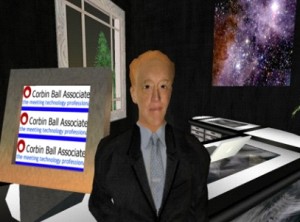 Interesting use and the impact of social software on the Meetings Industry by Carbin Ball – izdvojeno
Interesting use and the impact of social software on the Meetings Industry by Carbin Ball – izdvojeno
Second Life (www.secondlife.com), an internet-based multi-user 3-D virtual world, takes online chat rooms literally to a completely new dimension. Each user takes the form of an avatar (a 3-D completely configurable entity) to explore this virtual world and interact with others in this space. The relatively recent addition of full voice chat capability makes this a very interesting addition.
Meeting industry applications include the MeCo Mansion (download the free software at www.secondlife.com and then use the search box to find it). This is an ambitious project from Dan Parks who has built an elaborate 3-D mansion with several meeting rooms set aside for meeting industry experts, videos, informational links etc.
On September 20, 2007, I was the first speaker to present a seminar to the meetings industry using Second Life. Having given more than 100 virtual web-conference and web-casting seminars, I can say that this was easily, by far the most like a face-to-face meeting than any web conference or webcast I have participated in. This is completely different from standard online web conferences where participants essentially just see each other as a text list of participants — and where text message are the principal way of asking questions.
Before the presentation I was able to walk around and speak with the attendees as they came in; on the stage, I could see attendees as they moved around; during the presentation I could walk around and make gestures; questions and answers were voice instead of text; during the Q&A, I hopped off the stage to walk among the participants to answer the questions; after the event, I talked individually with the participants who stayed after.





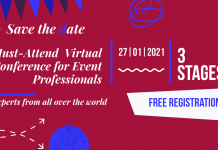



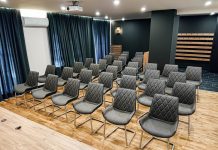












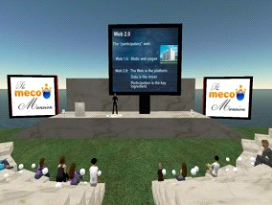













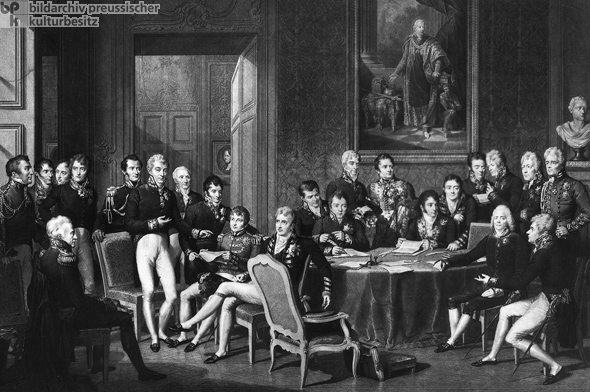

 English
English